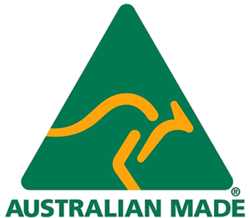Our history & values
Despite the hardships, isolation, and cost of transporting sheep and wool, sheep numbers grew steadily on the Island through the 1800s. The Kangaroo Island Courier newspaper reported in 1904 that there were 31,250 sheep on the island, following the drought years of the 1890s.
War played a big part in the industry through the 1900s. In the First and Second World Wars, the Island’s entire clip was purchased by the Commonwealth for the war effort, and the United States’ need for warm uniforms during the Korean War resulted in record prices for wool around the world.
The War Service Land Settlement Scheme opened up the interior of the Island in the 1940s and 50s, enabling an exponential increase in sheep numbers. By 1959, the Island’s 427,200 sheep produced 4.5 million pounds (more than 2 million kg) of wool. A decade later, the flock had grown to 836,150, producing 9.7 million pounds (4.4 million kg) of wool.
Industrial disputes rocked the industry throughout the 1970s and 80s, but the industry boomed until the national reserve price scheme collapsed. At the peak, Kangaroo Island was home to 1.24 million sheep and produced 6.95 million kilograms of wool, but when the price collapsed, many woolgrowers left the industry.
Others diversified into other agricultural products and tourism, helping to create the unique industries and attractions that thrive on the Island today.
In the middle of the turbulent 1990s, veterinarians Greg Johnsson and Deb Lehmann launched the Kangaroo Island Sheep Production Group, aiming to “lift productivity, profitability and sustainability” for island farmers, using scientific methods and research.
In 2011, the two vets teamed up with 18 farmers to form the Kangaroo Island Wool Company to market the best of Kangaroo Island wool to discerning international buyers.Our group has grown over the years, are now 22 farmers, two vets, and a sales and marketing manager.
As the tourism industry flourished and Kangaroo Island’s global reputation grew, Kangaroo Island Wool saw an increased level of interest in their farming endeavors from visitors. Recognizing there was a demand for Island-grown woolen garments which we can now offer thanks Australian Manufacture.
War played a big part in the industry through the 1900s. In the First and Second World Wars, the Island’s entire clip was purchased by the Commonwealth for the war effort, and the United States’ need for warm uniforms during the Korean War resulted in record prices for wool around the world.
The War Service Land Settlement Scheme opened up the interior of the Island in the 1940s and 50s, enabling an exponential increase in sheep numbers. By 1959, the Island’s 427,200 sheep produced 4.5 million pounds (more than 2 million kg) of wool. A decade later, the flock had grown to 836,150, producing 9.7 million pounds (4.4 million kg) of wool.
Industrial disputes rocked the industry throughout the 1970s and 80s, but the industry boomed until the national reserve price scheme collapsed. At the peak, Kangaroo Island was home to 1.24 million sheep and produced 6.95 million kilograms of wool, but when the price collapsed, many woolgrowers left the industry.
Others diversified into other agricultural products and tourism, helping to create the unique industries and attractions that thrive on the Island today.
In the middle of the turbulent 1990s, veterinarians Greg Johnsson and Deb Lehmann launched the Kangaroo Island Sheep Production Group, aiming to “lift productivity, profitability and sustainability” for island farmers, using scientific methods and research.
In 2011, the two vets teamed up with 18 farmers to form the Kangaroo Island Wool Company to market the best of Kangaroo Island wool to discerning international buyers.Our group has grown over the years, are now 22 farmers, two vets, and a sales and marketing manager.
As the tourism industry flourished and Kangaroo Island’s global reputation grew, Kangaroo Island Wool saw an increased level of interest in their farming endeavors from visitors. Recognizing there was a demand for Island-grown woolen garments which we can now offer thanks Australian Manufacture.







